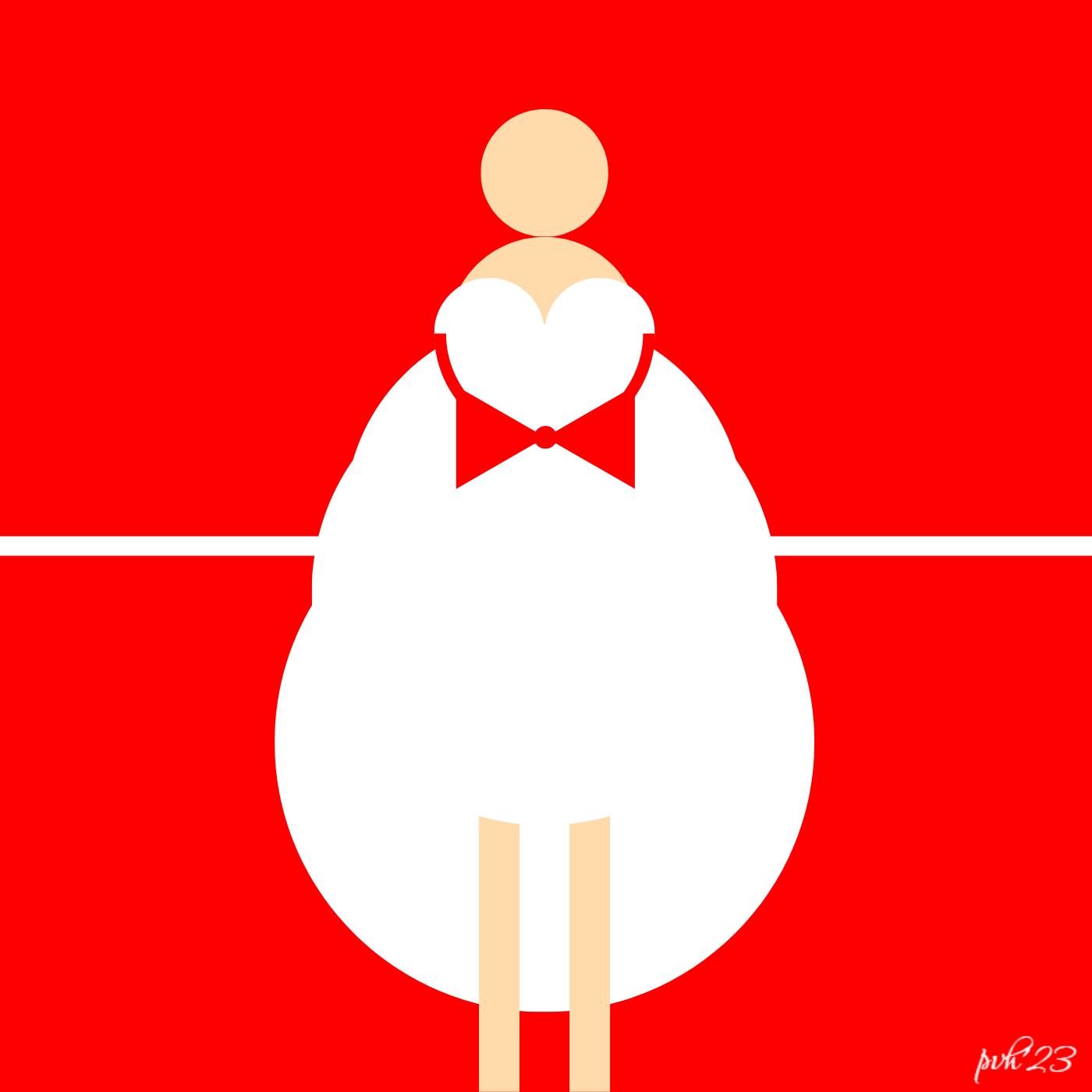
Mari et Femme is a minimalist digital reinterpretation of the traditional Western wedding portrait that both honors and playfully subverts classical form through abstract geometry and cultural hybridity.
Homage or Hijack?
January 2023
I started 2023 by asking a dangerous question: What if I took what they took from me?
I had been looking at Rothko, Giacometti, Venus de Milo—not to admire, but to interrogate. Why were they icons? Why was their silence revered, but our silences erased?
My pieces became acts of intervention. I wasn’t doing homage. I was hijacking: reclaiming the minimalist language and injecting it with a Filipino pulse.
Some called it derivative. I called it deliberate. I was holding up a mirror—not just to art history, but to the asymmetries in who gets remembered and who gets erased.

Lady in White transforms minimalist silence into a powerful act of remembrance and resistance, honoring a mother’s passing not through ornament, but through the unyielding presence of absence.
The Color of Silence
March 2023
The more I stripped away, the more meaning emerged.
I began to explore silence—not as absence, but as resistance. A void can speak louder than any image.
In Filipino culture, we’re often told to keep quiet, to keep the peace. But my minimalism wasn’t about peace. It was about unpeace—the unease of being colonized in color, in form, in expectation.
These silent works were not passive. They were shields. Each empty space was a refusal to decorate trauma.
Silence, I realized, can be louder than protest.

The Messiah is a digital cruciform figure rendered in minimalist geometry, where divine structure meets human vulnerability in a Techpressionist expression of sacrifice and transcendence.
Techpressionism and Me: Between the Grid and the Gut
May 2023
Around this time, I found a term I hadn’t heard before: Techpressionism.
It felt like a misfit space for misfit makers—people like me, who used digital tools to express raw emotion, not tech-savvy perfection.
I was drawn to the idea of coding as feeling. Of letting the machine glitch, and calling that beauty.
My grid-based works became more personal. I let the boxes break. I made the symmetry tremble.
It was in this space—between the algorithm and the gut—that I started to hear my own voice more clearly.
Not tech for innovation. Tech for intuition. For rupture. For reclamation.

Specks of Dust is a lone black form stands amid a vibrant chaos of color, embodying a decolonial minimalism that reclaims identity through presence, resistance, and refusal.
What I Took, What I Refused
June 2023
Looking back, I took many things from Western abstraction: restraint, form, structure.
But I also refused things. I refused coldness. I refused emptiness. I refused the idea that minimalism had to be apolitical.
What I was building was a relational minimalism—where absence was memory, and flatness was depth.
I didn’t want to transcend identity. I wanted to interrogate it.
And so, what emerged from this friction was not imitation—but divergence. The seed of something Filipino, personal, and entirely new.
continue reading Phase 3: Memory as Material